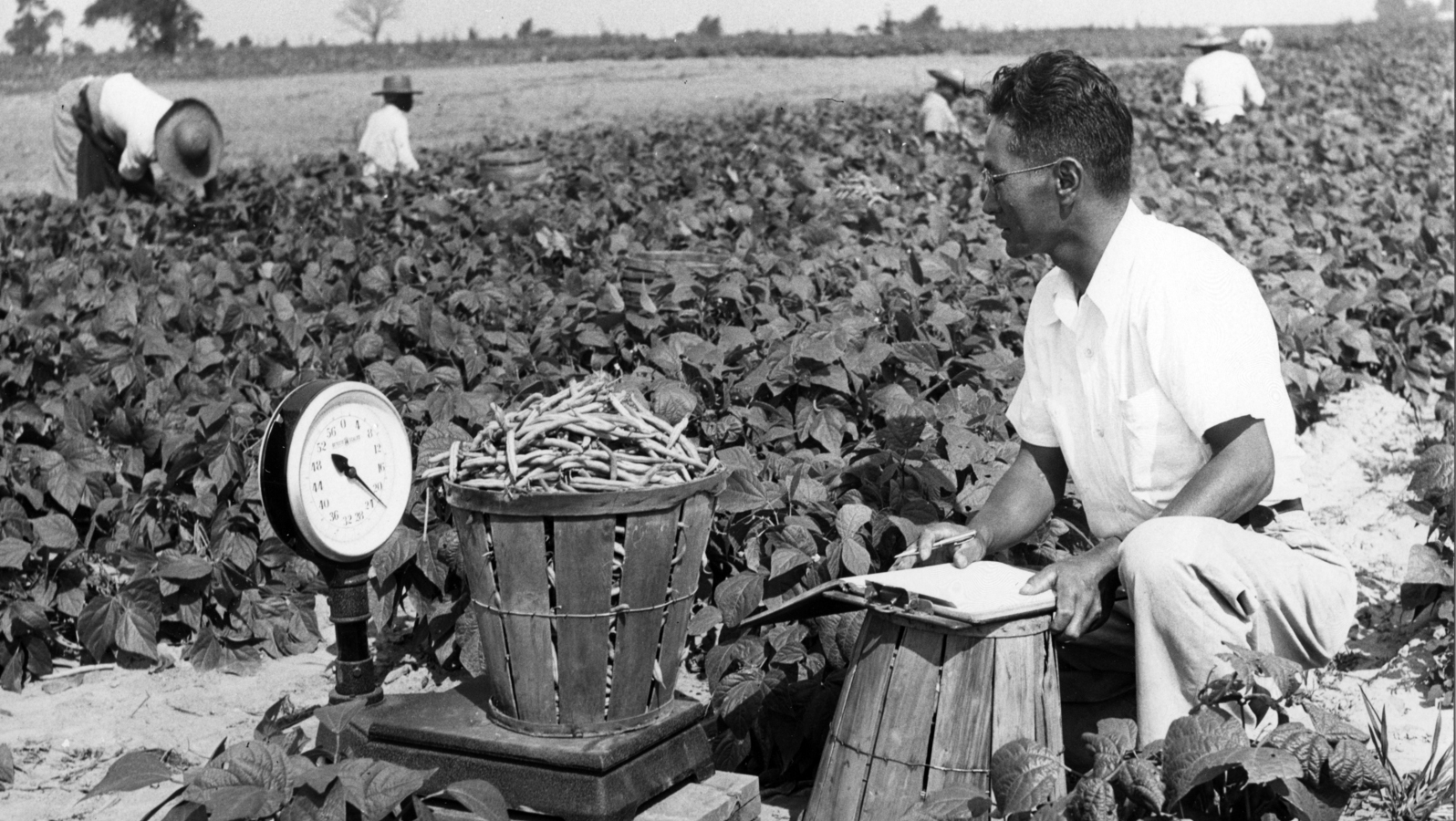Blog
Refugees at Work: the U.S. History of Capitalizing on Captive Labor

Vernon Ichisaka checks the weight of beans picked at Seabrook Farms in 1950. Courtesy of: Public Radio International
The States of Incarceration exhibit module Seabrook Farms and “Free” Labor: How is the racialized prisoner the ideal worker? explores the complicated immigrant labor history of Seabrook Farms. The frozen vegetable plant was a successful producer of suburban household staples during rise of consumerism. The company’s labor practices told a different story. Seabrook Farms labor camp was the largest agribusiness in the United States by 1950, with 6,000 employees at its peak. As the CEO, Charles Franklin Seabrook received the reputation of compassionately relocating refugee groups into the Seabrook Farms community. He also made calculated business decisions to take advantage of refugee displacement, monopolizing on racialized captive labor that would bring him certain financial gain. Seabrook hired, controlled, and surveilled parolees, displaced persons, POWs, and contracted migrant laborers. The living and working environment created a sense of safety but was ultimately a captive workplace, where refugees worked long and grueling hours for little compensation.
Today, refugees face oppressive labor conditions and detention, and in some cases prison labor with minimal compensation. The meatpacking industry employs Somalian refugees in small one-job Midwest towns that limit mobility, effectively creating a captive labor market. Companies like National Beef capitalized on refugees’ desperation to entice them to work long hours at a job with high workplace injury rates and deplorable working conditions. The refugees’ isolation and economic dependence on the meatpacking industry creates a degree of captivity within the limited labor market, reminiscent of the refugees at Seabrook Farms, and U.S. prison labor’s long history of profiting off of black bodies.
U.S. captive labor continues to be highly racialized. Racial disparities in incarceration, and by extension, captive labor, are extreme. Today, one-in-three African-Americans and one-in-six Latinos are likely to wind up in prison in their lifetime. The Seabrook Farms exhibit module, created by students from Rutgers University–New Brunswick, brings into question current immigrant labor practices regarding undocumented and refugee laborers, and more broadly, all captive labor. How does race and captivity - whether imposed by a company, the state, or economic limitations - impact workers’ experiences?